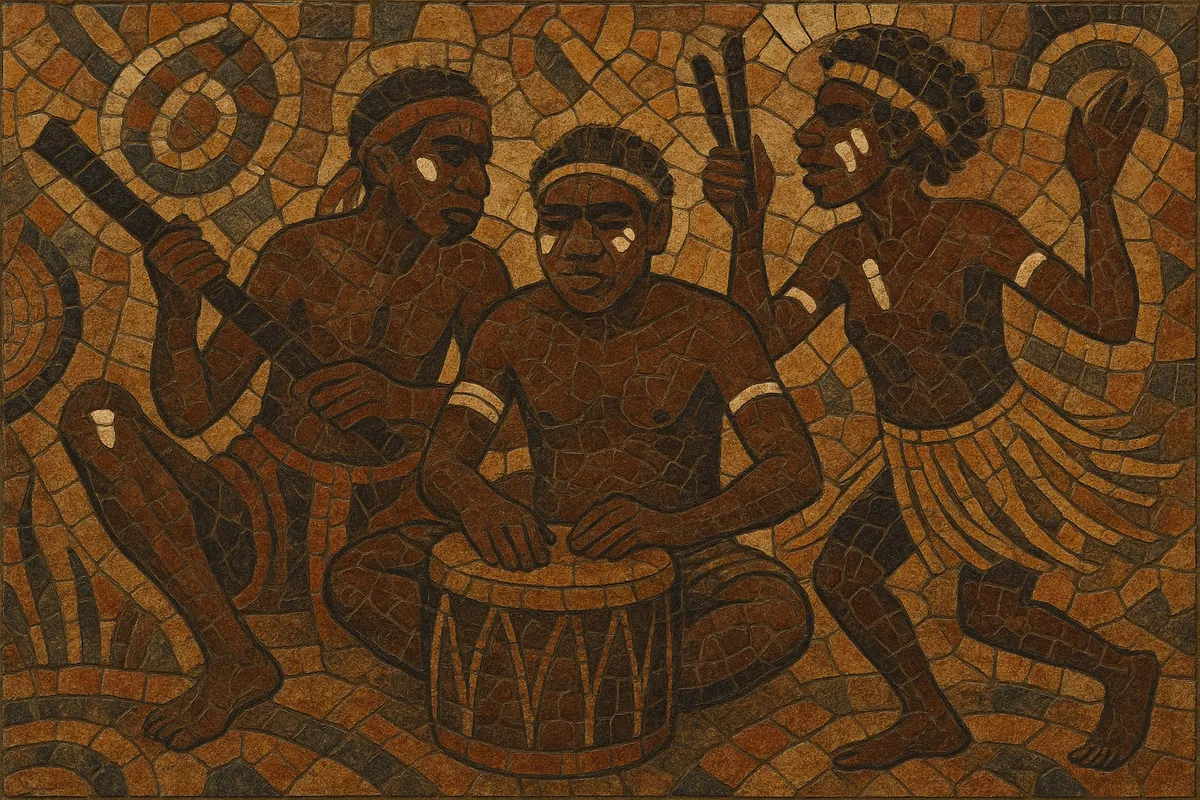Djanba is a public dance-song tradition from the Wadeye (Port Keats) region of the Northern Territory in Australia. Performed by Murrinh-Patha–speaking peoples and their neighbors, it is one of the key local ceremonial entertainment styles alongside lirrga.
Djanba pieces are led by a principal songman and accompanied by didjeridu (yidaki) and clapsticks, with a mixed chorus of men and women and choreographed group dancing. Songs are often received through dreams and encode place-names, ancestral stories, and clan affiliations, making the genre both a living creative practice and a vehicle for intergenerational knowledge.
Djanba arose in the Wadeye (Port Keats) area in the mid-20th century as a distinct public dance-song form. Elders describe its repertoire as being revealed in dreams and consolidated through community performance, a process typical of many Aboriginal Australian song traditions.
While locally grounded in Murrinh-Patha cultural practice, Djanba reflects regional intercultural contact across the Top End. Its ensemble layout (lead songman, didjeridu, clapsticks, and chorus) and public, festive dance setting align it with neighboring Northern Territory styles, even as its melodic contours, textual content, and dance figures retain community-specific identity.
Today, Djanba continues to be performed at community gatherings, festivals, and cultural events in and around Wadeye. New songs are still composed, performed, and taught by senior songmen and community ensembles, ensuring continuity while allowing stylistic evolution.


